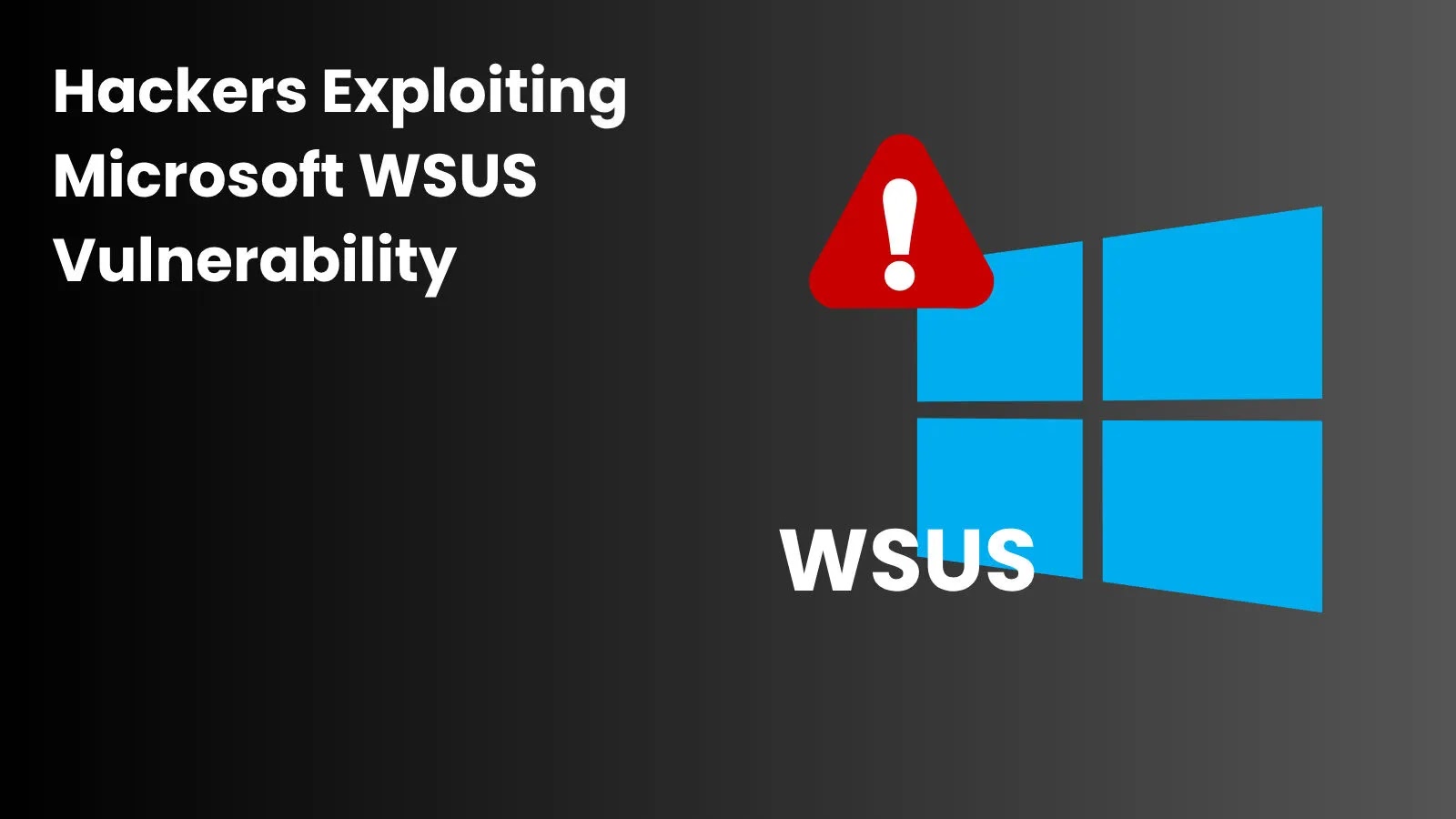A critical security flaw in Microsoft’s Windows Server Update Services (WSUS), identified as CVE-2025-59287, is currently being actively exploited by cyber attackers. This vulnerability allows unauthenticated individuals to execute arbitrary code with SYSTEM privileges on unpatched WSUS servers, potentially leading to full control over enterprise networks.
Understanding the Vulnerability
WSUS is a vital tool for IT administrators, facilitating the centralized management and distribution of Microsoft product updates across corporate networks. The identified flaw arises from unsafe deserialization of untrusted data within WSUS’s update approval process. Specifically, the vulnerability is located in the handling of AuthorizationCookie objects by the GetCookie() endpoint. When a request is made to this endpoint, the server decrypts the cookie data using AES-128-CBC and then deserializes it using the .NET BinaryFormatter class. Critically, this deserialization process lacks proper type validation, allowing attackers to craft malicious serialized objects that, when deserialized, result in arbitrary code execution under the highly privileged SYSTEM account. This flaw has been assigned a CVSS v3.1 score of 9.8, indicating its critical severity.
Active Exploitation and Exposure
As of October 27, 2025, security researchers have identified at least 2,800 exposed WSUS instances online, primarily in North America and Europe. These instances were discovered through scans of ports 8530 and 8531, which are the default ports for WSUS HTTP and HTTPS traffic. While not all exposed instances may be vulnerable, the widespread exposure underscores the potential reach of this vulnerability in corporate environments.
The exploitation of this vulnerability is particularly concerning due to its ease of use and the high privileges obtained upon successful exploitation. Attackers can execute arbitrary code with SYSTEM privileges, allowing them to deploy malicious updates, exfiltrate sensitive data, or install persistent backdoors. Early indicators of exploitation include anomalous traffic to WSUS endpoints and unusual update approvals logged in the event viewer IDs 10016 and 20005.
Real-World Impact
A notable incident involved a mid-sized U.S. financial firm, where intruders exploited the vulnerability to access internal Active Directory, leading to a brief outage on October 23. This incident highlights the potential for significant operational disruption and data compromise resulting from this vulnerability.
Mitigation and Response
In response to the active exploitation of this vulnerability, Microsoft has released an emergency out-of-band (OOB) security update. Administrators are strongly urged to apply this update immediately to mitigate the risk. After installing the update, a system reboot is required to ensure the fix is fully effective.
For organizations unable to apply the patch immediately, Microsoft recommends the following temporary mitigations:
1. Disable the WSUS Server Role: Disabling the WSUS role on the server removes the attack vector entirely. However, this will prevent the server from managing and distributing updates to client systems.
2. Block High-Risk Ports: Block all inbound traffic to TCP ports 8530 and 8531 on the host-level firewall. This action removes the attack vector but will prevent the server from managing and distributing updates.
It’s important to note that these workarounds should remain in place only until the official patch can be applied.
Broader Implications
The exploitation of this vulnerability serves as a stark reminder of the critical importance of timely patch management and the need for organizations to maintain robust security postures. WSUS, as a core component of many enterprise environments, represents a high-value target for attackers. A compromise of a WSUS server can provide a foothold for lateral movement and widespread network compromise.
Organizations are advised to audit their update servers regularly, restrict network access to WSUS servers, and monitor event logs for anomalous update requests. Implementing defense-in-depth controls for software update channels can further enhance security and mitigate the risk of exploitation.
Conclusion
The active exploitation of CVE-2025-59287 in Microsoft’s WSUS underscores the urgent need for organizations to apply the available security updates and review their security configurations. By taking immediate action, organizations can protect their networks from potential compromise and ensure the integrity of their update management systems.



